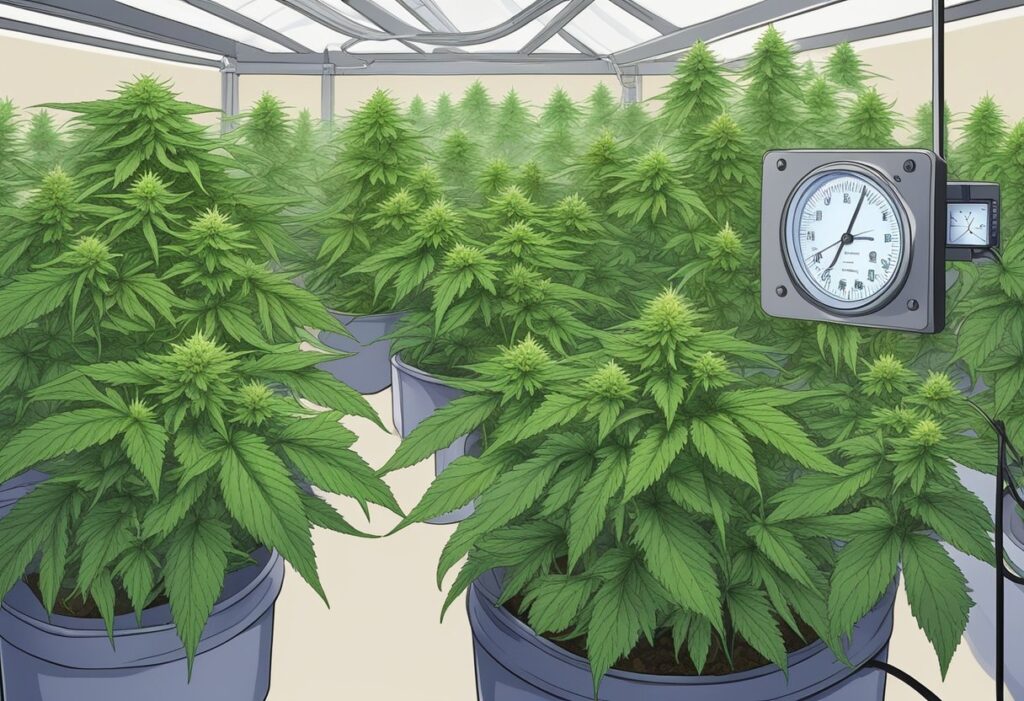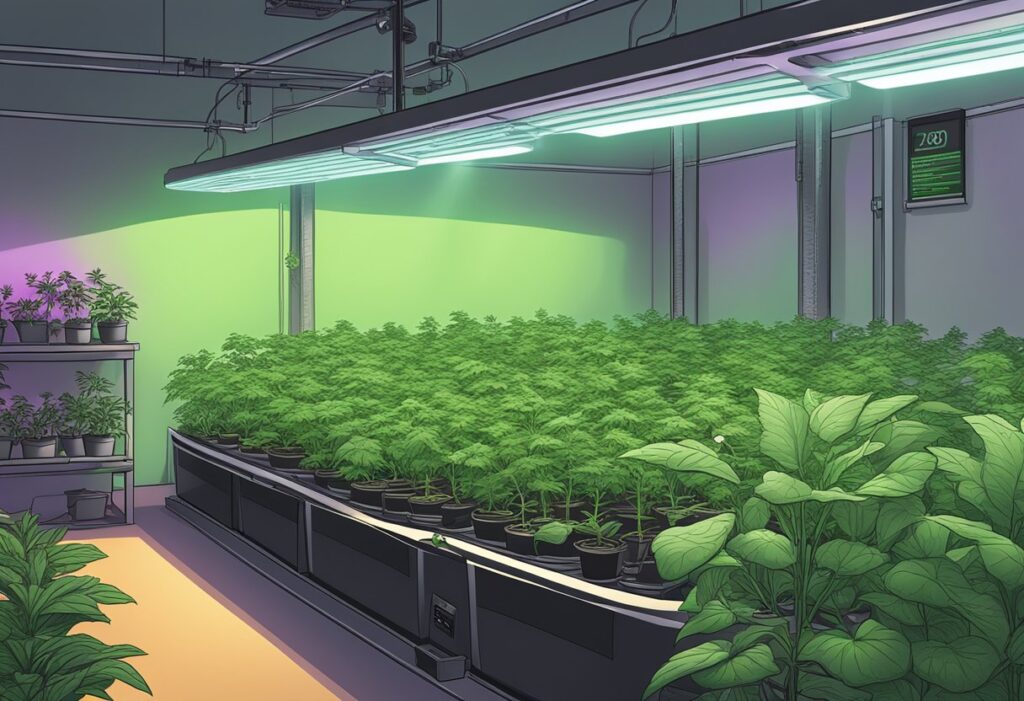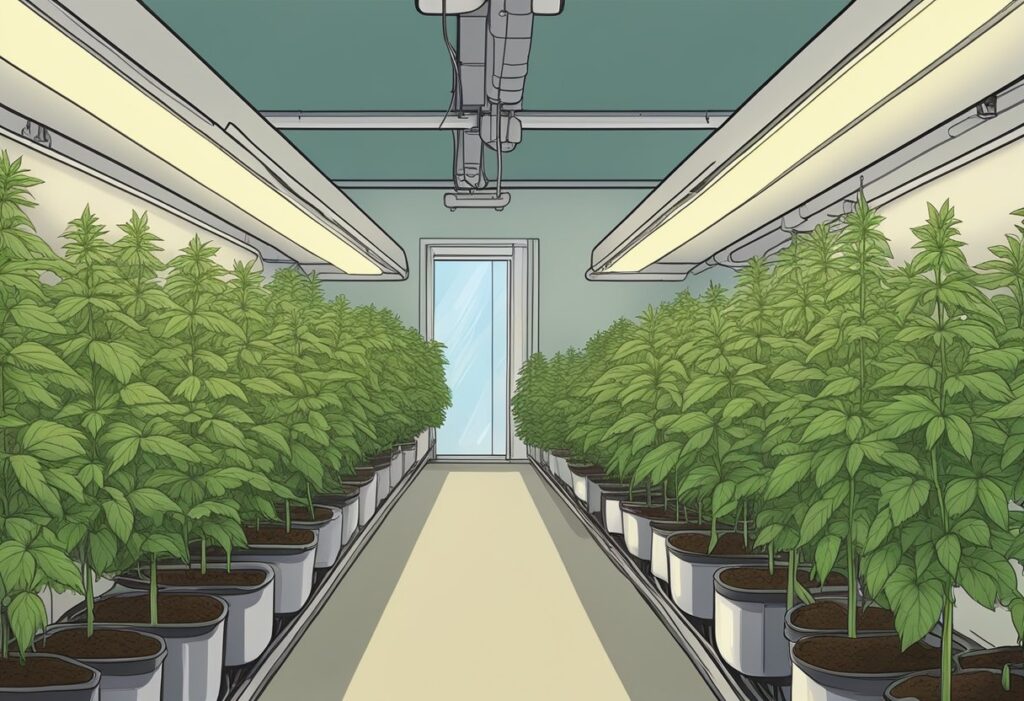
Autoflowering cannabis plants offer you a quick and flexible growing experience, especially suited for the shorter growing seasons in Canada. Let’s dive into how they differ from their photoperiod cousins and the unique genetic makeup of the ruderalis strain which imparts their autoflowering capability.
When you’re deciding between autoflower and photoperiod strains, the main difference lies in how they transition from the vegetative stage to flowering. Autoflowers don’t rely on a change in the light cycle to begin flowering; they will transition based on age. Typically, autoflowers start to flower about 2-4 weeks after germination, irrespective of the light schedule. In contrast, photoperiod strains require specific light cycles to trigger flowering, usually entailing a switch to 12 hours of light and 12 hours of darkness after the plants have grown for a certain period under an 18/6 or 24/0 light schedule during the vegetative stage.
For you as the grower, the main takeaway is the flexibility autoflowers offer. You can plant them at almost any time during the growing season, ensuring they receive enough light without worrying about changing schedules to induce flowering. This is particularly advantageous for outdoor growing in Canada where the growing season is short.
The term “Ruderalis” is derived from Cannabis ruderalis, a strain of cannabis that originates from Central Asia and Russia. This strain is the genetic backbone enabling the autoflowering trait. Ruderalis plants survive in harsh climates with less sunlight, which has enabled them to evolve the autoflowering trait as a survival mechanism.
The key genetic characteristics of Ruderalis that are of interest to you are its hardiness and its automatic shift to the flowering stage after a certain period of growth, not triggered by declining daylight hours like photoperiod strains. This genetic trait is often bred into more popular strains to create autoflowers that can withstand colder climates, making autoflower seeds a smart choice for your growth if you face unpredictable or short growing seasons.

Selecting the right lighting schedule is key to maximizing the yields of your autoflower seeds in Canada. You’ll need to balance between the most effective light hours and minimizing energy costs to get the best out of your plants.
Autoflowering plants thrive on an 18/6 light cycle, which entails providing 18 hours of light and 6 hours of darkness each day. During vegetative growth, plants use this time to photosynthesize and accumulate the energy required for flowering. The 18 hours of light typically come from a full spectrum LED light, which can provide a balance of blue and red light, aiding in robust plant development with less energy usage than traditional lighting systems.
Transition your plants to a 12/12 cycle for the flowering stage. This schedule replicates the natural decrease in daylight hours and signals the plants to enter the blooming phase. It is essential during this stage to ensure your lighting provides a spectrum that leans more towards red light, imitating the softer sunlight of late summer, and promoting bud development.
Some growers opt for non-traditional schedules like 20/4 or even continuous 24-hour lighting. These may accelerate growth but often have higher energy costs. While the 20/4 schedule can slightly boost growth, it is up to you to weigh the potential increase in yields against the rise in electricity use. Always remember, the dark period is not only for ‘rest,’ but it’s an active part of the growth cycle, especially for flowering.
By carefully considering each aspect of your lighting schedule, you can cultivate autoflower strains that deliver maximum yields with optimal energy efficiency.

In the pursuit of yielding bountiful harvests, understanding the nuances of light schedules combined with other cultivation practices is key. Your autoflowers are sensitive to their environment, and a balance of light, humidity, nutrition, and climate plays a pivotal role in their health and productivity.
Your autoflowers harness light energy to perform photosynthesis, which is crucial for vegetative growth and bud formation. Unlike feminized photoperiod strains, autoflowers don’t depend on light cycle changes to trigger flowering. However, the intensity and duration of lighting still affect the growth stages. LED or LEC grow lights are popular for their efficiency and reduced heat concerns. A common practice is to provide 18 hours of light and 6 hours of darkness (18/6 cycle) or even 24 hours of continuous light (24/0 cycle), although some growers claim that periods of darkness can support better health and growth.
Maintain an optimal climate when employing powerful lighting like HID or LED. These lights can elevate temperatures, prompting you to balance with adequate ventilation and humidity control. Remember:
This balance is vital to mitigate heat stress and ensure heat does not compromise health.
The right nutrient regimen aligns with light exposure; more light typically means your plants can uptake more nutrition. However, avoid overfeeding as autoflowers are not as nutrient-hungry as their photoperiod counterparts. Pay attention to:
An airy growing medium ensures roots receive ample oxygen, complementing nutrient uptake.
Autoflowers transition into the flowering phase without a change in light cycle, but adjusting your approach can enhance results:
| Growth Stage | Light Cycle | Cultivation Tips |
|---|---|---|
| Vegetative | 18/6 or 24/0 | Employ LST to encourage bushy growth, increase airflow and light penetration. |
| Flowering | 18/6 or 12/12 (optional) | Reduce light intensity if plants show signs of light burn, increase CO2 for denser flowers. |
A timer can automate the light cycle, ensuring consistency, and avoid stress from irregular lighting patterns.
Focus on these areas, and you’re on your way to nurturing healthy autoflowers capable of producing dense and high-quality buds.
Your autoflowering cannabis plants typically thrive on an 18/6 light schedule—18 hours of light followed by 6 hours of darkness. This cycle encourages robust growth throughout the vegetative phase.
Light intensity directly impacts your autoflowering cannabis plants’ rate of photosynthesis. Adequate intensity promotes healthy, vigorous growth, while insufficient intensity can lead to stunted plants and reduced vigour.
Yes, adapting light cycles can influence the yield of your autoflowering strains. Transitioning to a 12/12 cycle—12 hours of light and 12 hours of darkness—during flowering can encourage the plant to focus energy on bud production.
You should consider altering the light spectrum when your autoflowers enter the flowering stage. Plants typically benefit from more red wavelengths during flowering to promote blooming.
The most effective light cycle for maximizing growth in autoflower plants is generally the 18/6 cycle during vegetative growth, promoting ample photosynthesis without overwhelming the plant.


WE ARE EVERY GROWERS ONE STOP SHOP TO ACQUIRE PREMIUM CANNABIS SEEDS FOR SALE IN THE USA, CANADA AND AUSTRALIA
Farmers Lab Seeds 2024,
All Right Reserved
Seeds are sold as novelty items, souvenirs, and collectibles. They contain 0% THC. We encourage our customers to check the legislation in their Country, State, Province, and Municipality prior to purchasing items from our store. We do not provide growing information.
All seeds are sold as hemp, and lab tested under 0.3% THC. This product is not for use by or sale to persons under the age of 21. This product should be used only as directed on the label. It should not be used if you are pregnant or nursing. Consult with a physician before use if you have a serious medical condition or use prescription medications. A Doctor’s advice should be sought before using this and any supplemental dietary product. All trademarks and copyrights are property of their respective owners and are not affiliated with nor do they endorse this product.
These statements have not been evaluated by the FDA. This product is not intended to diagnose, treat, cure or prevent any disease. Individual weight loss results will vary. By using this site, you agree to follow the Privacy Policy and all Terms & Conditions printed on this site. Void Where Prohibited by Law.